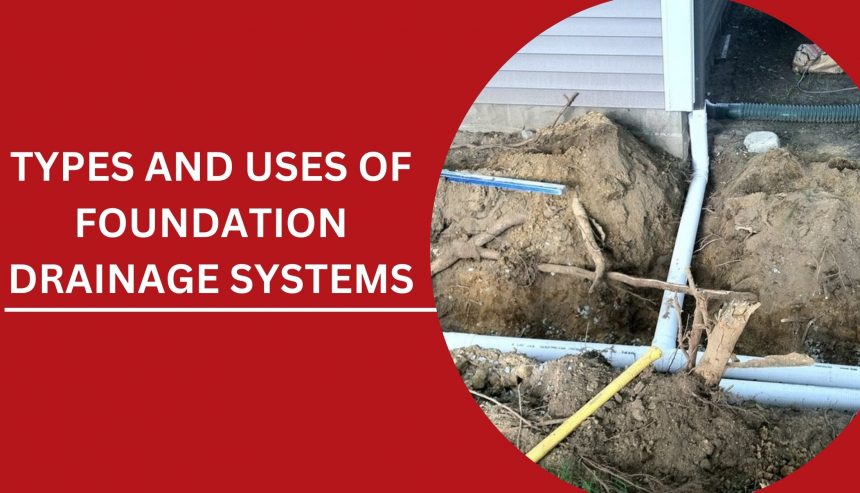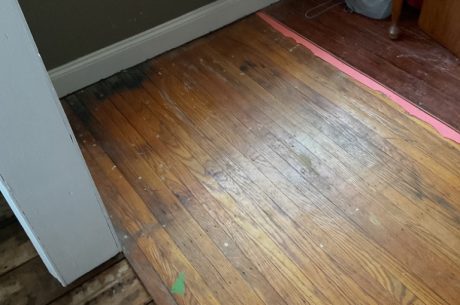Foundation drainage systems may not be the most glamorous aspect of home construction, but they play a vital role in safeguarding your property against water damage and maintaining structural integrity. Whether you’re building a new home or renovating an existing one, understanding the types and uses of foundation drainage systems is crucial for protecting your investment and ensuring long-term durability.
In this blog post, we’ll delve into the world of foundation drainage systems, exploring their various types, functions, and applications. From traditional French drains to modern waterproofing membranes, we’ll uncover the mechanisms behind these systems and how they mitigate moisture issues around your home’s foundation.
So, let’s dig in and discover how proper drainage can lay the groundwork for a solid and secure living space.
What is a Foundation Drainage System?
A foundation drainage system is a network of components designed to manage and redirect water away from a building’s foundation. Its primary purpose is to prevent moisture from accumulating around the foundation, which can lead to a host of structural problems such as foundation settling, cracking, and basement flooding.
Components of Foundation Drainage System
These systems typically consist of several key elements:
1. Perimeter Drains:
Perimeter drains, also known as French drains, are trenches filled with gravel or perforated pipes installed around the perimeter of the foundation. They collect water that accumulates in the soil and direct it away from the building.
2. Sump Pump:
In some cases, a sump pump is integrated into the drainage system. This pump collects water from the perimeter drains and pumps it away from the foundation, usually to a storm sewer or a designated drainage area.
3. Waterproofing Membranes:
Waterproofing membranes are applied to the exterior surface of the foundation walls to prevent water infiltration. These membranes create a barrier that keeps water from seeping into the foundation material.
4. Surface Grading:
Proper grading of the soil around the foundation is essential for effective drainage. The ground should slope away from the building to encourage water to flow away naturally.
5. Downspout Extensions:
Downspout extensions are attached to gutter downspouts to direct rainwater away from the foundation. They can be simple extensions or underground pipes that carry water a safe distance from the building.
Foundation Drain vs. French Drain:
While the terms “foundation drain” and “French drain” are sometimes used interchangeably, they actually refer to different components within a foundation drainage system.
Foundation Drain:
A foundation drain, also known as a footing drain or perimeter drain, is a system installed around the perimeter of a building’s foundation. It consists of perforated pipes or drainage tiles buried in a trench filled with gravel. The purpose of a foundation drain is to collect water that accumulates around the foundation and direct it away from the building, thus preventing moisture from seeping into the foundation material.
French Drain:
A French drain is a type of drainage system designed to alleviate water buildup in a specific area, such as a yard or a low-lying spot on a property. It typically consists of a perforated pipe surrounded by gravel or rock and covered with filter fabric. The French drain is installed underground and slopes away from the problem area, allowing water to drain naturally and prevent saturation of the soil.
Are Foundation Drains Required?
Whether foundation drains are required depends on various factors, including local building codes, soil conditions, and the design of the building. In areas prone to heavy rainfall or with high groundwater levels, foundation drains are often considered essential for protecting the structural integrity of buildings and preventing water damage.
However, in drier climates or on sites with well-draining soil, foundation drains may not be required but are still recommended as a preventive measure against moisture-related issues.
Types of Foundation Drainage:
There are several types of foundation drainage systems, each with its own advantages and applications:
1. Perimeter Drainage System:
This is the most common type of foundation drainage, consisting of perforated pipes or drainage tiles installed around the perimeter of the foundation. The collected water is directed to a sump pit or a safe drainage area.
2. Exterior Waterproofing Membranes:
Waterproofing membranes are applied to the exterior surface of foundation walls to prevent water infiltration. These membranes create a barrier that keeps water from seeping into the foundation material.
3. Interior Drainage System:
In some cases, an interior drainage system may be installed to manage water that penetrates the foundation. This typically involves installing drains and a sump pump inside the basement or crawlspace to remove excess water and prevent flooding.
4. Surface Grading and Downspout Extensions:
Proper grading of the soil around the foundation and the use of downspout extensions can also help improve drainage and prevent water from pooling near the building.
Uses of Foundation Drainage Systems
Foundation drainage systems serve several important purposes in residential and commercial construction:
1. Preventing Water Damage:
One of the primary purposes of foundation drainage systems is to prevent water from accumulating around the foundation of a building. By collecting and redirecting water away from the foundation, these systems help prevent moisture infiltration into the foundation material, which can lead to structural damage, such as cracking, settling, and deterioration.
2. Reducing Hydrostatic Pressure:
Excessive water buildup around a foundation can create hydrostatic pressure, which can push against the foundation walls and cause them to crack or bow inward. Foundation drainage systems relieve this pressure by collecting and draining away excess water, thereby reducing the risk of foundation damage.
3. Preventing Basement Flooding:
Foundation drainage systems, particularly those with sump pumps, help prevent basement flooding by effectively managing groundwater and surface water runoff. By removing water from around the foundation and directing it away from the building, these systems help keep basements dry and free from water damage.
4. Preventing Soil Erosion:
Water runoff from roofs, driveways, and other surfaces can erode the soil around the foundation, leading to soil settlement and instability. Foundation drainage systems help control water runoff and prevent soil erosion by directing water away from the foundation and into designated drainage areas.
5. Mitigating Mold and Mildew Growth:
Moisture accumulation around the foundation can create favorable conditions for mold and mildew growth, which can pose health risks and compromise indoor air quality. Foundation drainage systems help reduce moisture levels around the foundation, thereby mitigating the risk of mold and mildew growth inside the building.
6. Preserving Landscaping:
Foundation drainage systems help protect landscaping and outdoor living spaces by preventing water from pooling around the foundation and causing damage to plants, trees, and hardscape features. By effectively managing water runoff, these systems help preserve the integrity and aesthetics of the property.
In conclusion, foundation drainage systems are indispensable components of residential and commercial construction, serving a multitude of essential purposes. From preventing water damage and basement flooding to reducing hydrostatic pressure and mitigating mold growth, these systems play a vital role in safeguarding buildings against the detrimental effects of moisture infiltration.
As we’ve explored in this post, understanding the types, uses, and benefits of foundation drainage systems is crucial for homeowners, builders, and property managers alike. By prioritizing proper drainage solutions, we can mitigate water-related risks, enhance property value, and ensure peace of mind for years to come.
What is the best drain for a foundation?
The best drain for a foundation often depends on factors such as local climate, soil conditions, and the specific needs of your property. However, a commonly used and effective type of foundation drain is a perimeter drain system.
This system typically consists of perforated pipes or drainage tiles installed around the perimeter of the foundation, either on the exterior or interior side. Perimeter drains are designed to collect water that accumulates around the foundation and direct it away from the building, thus preventing moisture from seeping into the foundation material.
Where should a foundation drain be placed?
Foundation drains are typically placed at the base of the foundation walls, either on the exterior or interior side, depending on the specific circumstances of the property. Exterior placement involves burying the drain in trenches filled with gravel around the exterior perimeter of the foundation.
This placement intercepts water before it reaches the foundation walls and directs it away from the building. Interior placement may be necessary in retrofitting or renovation projects and involves installing drains and a sump pump inside the basement or crawlspace to remove excess water that penetrates the foundation.
How much does it cost to install a drain in the foundation?
The cost of installing a drain in the foundation can vary depending on several factors, including the size and layout of the property, the type of drain system chosen, labor costs in your area, and any additional considerations such as excavation or landscaping work.
On average, homeowners can expect to pay anywhere from a few thousand dollars to several thousand dollars for the installation of a foundation drain system. It’s best to consult with qualified contractors or drainage specialists for accurate cost estimates tailored to your specific project requirements.




 PuroClean Emergency Fire, Water and Mold Damage Restoration New Jersey
PuroClean Emergency Fire, Water and Mold Damage Restoration New Jersey